 by Cameo Miller
by Cameo Miller
It’s Camp Time at Valley View Camp! Your Twinkling Trail
www.riding-instructor.com Official Publication of The American Riding Instructors Association Spring 2024
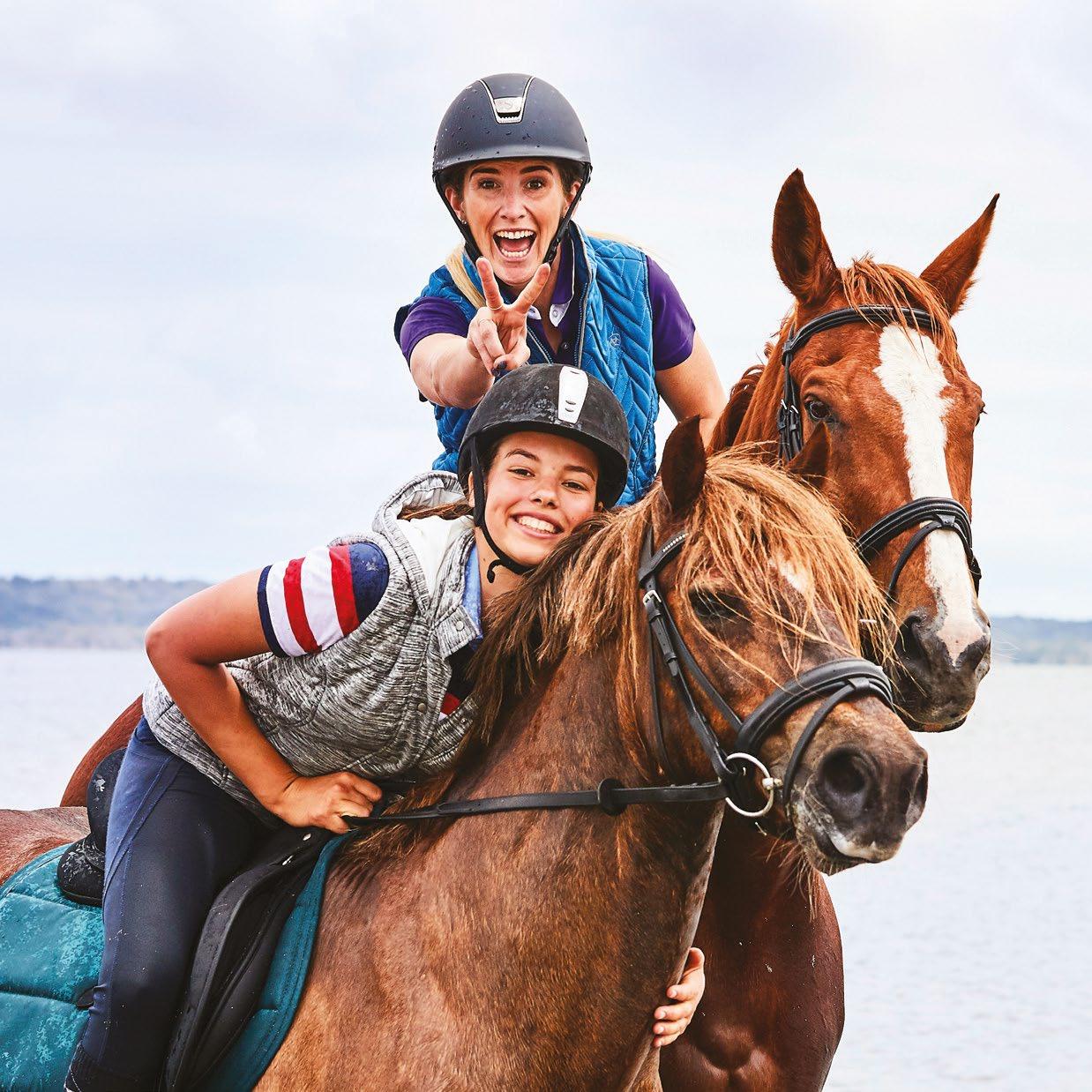










Official Saddle Supplier of the American Riding Instructors Association Official Saddle Sponsor of the United States Pony Club @wintecsaddles Share your story Find your next Wintec saddle at wintec-saddles.com @wintec.saddles FRIENDS Wintec friends have more fun! Our Wintec 2000 All Purpose saddles are like no other, we can ride anywhere and in any weather! The super-soft and grippy seat and knee inserts are comfortable and secure, and our horses feel so free to move! Wintec 2000 All Purpose Official Saddle Supplier of the American Riding Instructors Association Official Saddle Sponsor of the United States Pony Club @wintecsaddles Share your story Find your next Wintec saddle at wintec-saddles.com @wintec.saddles
Spring 2024
Published by: American Riding Instructors Association
P.O. Box 366 Alton, NH 03809-0366
Tel: 603-605-5275
E-mail: aria@riding-instructor.com
Website: www.riding-instructor.com
Director: William Watson aria@riding-instructor.com
Manager of Corporate Sponsorship and Advertising:
Donna Hartshorn Tel 407-927-3578
Art Director: Ferenc Rozumberski franzz@gmail.com
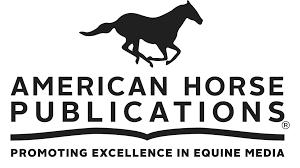
Member
ARIA recognizes that equestrian headgear that does not meet the current ASTM standard is not safe, although certain equestrian activities pictured in this magazine may not adhere to these requirements.
Riding Instructor is the Official Publication of the American Riding Instructors Association.
For Advertising Rates & Data, please contact the publisher.
The editor of Riding Instructor reserves the right to edit reasonably all copy submitted, and all contributions become the property of Riding Instructor. The Editor does not hold himself responsible for, nor does he necessarily agree with, the opinions expressed in Riding Instructor Riding Instructor assumes no responsibility for loss or damage to unsolicited photographs or manuscripts.
Reproductions without permission are strictly prohibited by copyright laws. While endeavoring to accept only reliable advertising, Riding Instructor will not be responsible to the public for advertisements, and the right to decline or discontinue any advertisement is reserved.
Debi
Denny
Julie I. Fershtman, Esq.
Charlotte Brailey Kneeland * Founder
Gayle Lampe
Sarah Sliva, MD
Linda Tellington-Jones
ARIA Official Suppliers and Sponsors
These companies, whose commitment to quality reflects our own, are official suppliers and sponsors of the American Riding Instructors Association. We thank them for their support, which helps us to continue our work.

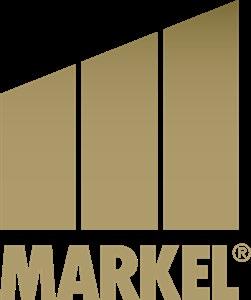

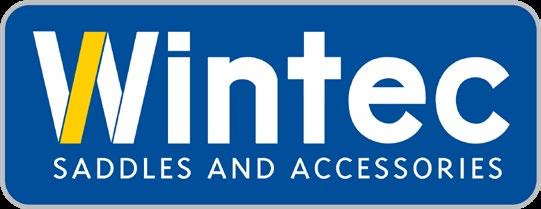
Spring 2024 | Riding Instructor 3
Advisory Board
ARICP
DeTurk Peloso
Emerson
To learn the benefits of becoming an ARIA Official Supplier or Sponsor, please contact ARIA at 603-605-5275 or aria@riding-instructor.com
www.horseinsurance.com ARIA’s Official Insurance Supplier www.williamwoods.edu/eqs ARIA Official Sponsor www.wintec-saddles.com ARIA’s Official Saddle Supplier eartec.com Official Communications Device Supplier
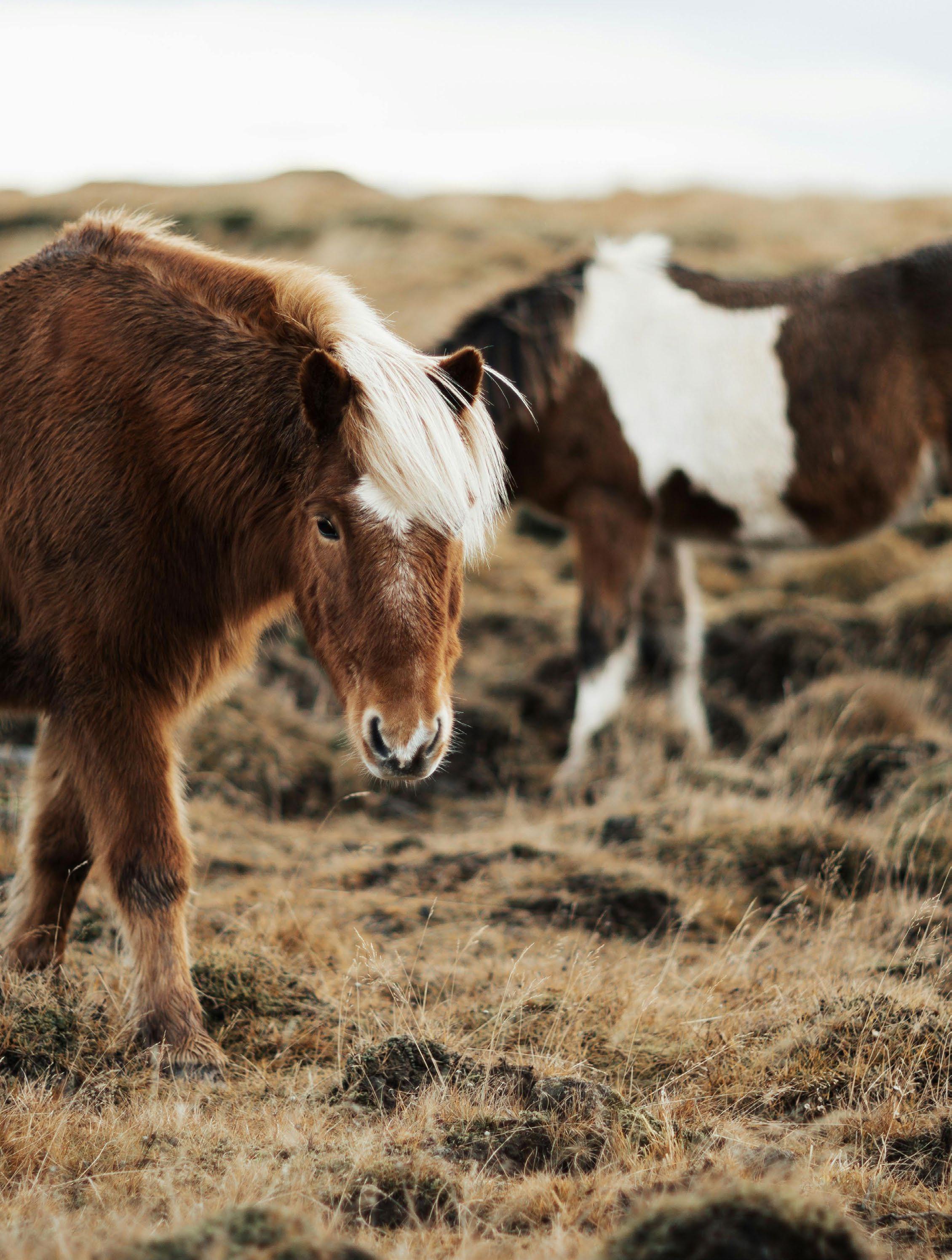
5 When You’re Not the Cutting Edge Anymore
By Lydia Fairchok
9 It’s camp time at Valley View Camp! Valley View Ranch Equestrian Camp
10 Sport psychology
7 Tips to Increasing Your Resilience Laura King CHt, NLP, Life & Performance Coach
13 Legal focus Business Insurance for Business Activities
Julie I. Fershtman, Attorney at Law
16 “Aha!” Moments: When the Light Goes On
By Didi Arias
18 Business matters
Equestrian Tech: Harnessing Technology In & out of the Stable
By Shya Beth
20 Stress Pneumonia In Horses
By Janet Forster
22 Sponsor Spotlight
25 Cameo’s Cauldron Your Twinkling Trail
By Cameo Miller
26 Business matters
My “Department Store Rules”
Carol Gordon

When You’re Not the Cutting Edge Anymore
By Lydia Fairchok
Once upon a time, I was the first and only person in my immediate circle to consider barefoot care for my horse. Older riders and trainers at the barn shook their heads over my careless decision to “risk a good horse”, telling me he would develop abscesses and couldn’t be ridden on certain trails or over pavement. Despite the pushback, I stuck to my guns and have never regretted the decision. Eventually, barefoot became more accepted in our area and some of the naysayers even decided it wasn’t such a bad idea after all.
Being an early adopter of barefoot is one of the few times I have done something so radically different from my social circle. Normally, I am the first to admit that I often resist change rather than embrace it. Familiarity is comfortable and I don’t enjoy things that rock the boat. Because of this, I sometimes find the many shifts in our industry to be exhausting. Regulations, technology, best practices, judging preferences, clothing styles, veterinary care advancements, Internet-personality train-
ers…while some changes are easy to get behind because of their obvious benefit (like modifying deworming practices to combat parasitic resistance, or the increased spotlight on training and competition ethics), I increasingly find myself saturated with options, platforms, opinions, and trends that simply did not exist when I was first making decisions as a horse owner and instructor.
When you are new to the field, all this change can be overwhelming in an exciting
Spring 2024 | Riding Instructor 5
way. But if you’ve spent many years in the profession—especially if your level of involvement has fluctuated to accommodate children, elder care, other careers, your physical or mental health, or the abilities of your horses—“excited” may not be the word anymore. In fact, it may feel like there isn’t a word…just a vague or intermittent sense of discontent, weariness, frustration, unfulfillment, or self-doubt. Burnout comes in many forms, but one creeping culprit is irrelevance.
Irrelevance is the state of being outdated, obsolete, or no longer connected to a meaningful purpose. It shows up when we feel like we aren’t fully in touch with the pulse of our profession or not as proficient and valuable as we once were. You might feel it when you realize you have never even heard of the pro rider involved in the latest achievement or scandal, or when you learn that a top trainer you looked up to as a kid has passed away. It might surface when you see another barn’s expensive facility upgrade, talented new horses, or expanding program. You might feel a twinge of it when you try to research the treatment your new vet recommended but can’t find it in any of your reference books because it wasn’t discovered yet when they were written. How old is that vet, anyways? He barely looks old enough to have graduated high school.
Speaking of high school, your current teenage students were born between 2005 and 2011, and six-year-olds just entering the program were born in 2018. These kids talk and act differently from how you remember yourself and your friends at those ages. The cultural/social issues they bring to the barn seem so much more divisive and complex, and the parents have meltdowns as bad as—or worse than—the kids. And since when did “Don’t text and drive” have to become “Don’t text and ride” for youth and adults alike?
Feelings of irrelevance and inadequacy also show up when you find yourself
“
Compassion, integrity, laughter, and sportsmanship never go out of style.
impact—or fewer people seem interested in being impacted by us—we might find ourselves asking “Am I good enough to keep doing this? Would my students be better served by someone else? Do I still have what it takes? Do I want to do what it takes?”
Carey Nieuwhof, a prolific author, speaker, and leadership mentor, identifies irrelevance as one of the “seven greatest challenges that no one expects and everyone experiences”. In his book Didn’t See It Coming, which addresses irrelevance among other professional challenges such as cynicism, burnout, and pride, he notes that “change doesn’t ask permission”. Isn’t that the truth! Fortunately, knowing irrelevance is a problem we all must face eventually means it is also a problem for which we can all prepare. Here are my favorite strategies for dealing with the age-old reality of feeling irrelevant:
having second thoughts about relying on your own body. Was it really so long ago that you gladly hopped in the saddle to take the edge off an over-fresh lesson horse? Now you secretly prefer to put those spunky teenagers on board instead. It’s not that you’re afraid, but the prospect of a fall somehow seems more significant these days. You know your apprehension is sensible, but it still feels like losing a piece of yourself.
Any one of these things alone probably wouldn’t be crippling. However, change and progress are happening in our personal lives at an equally rapid pace, for better or for worse. When small changes from all arenas of life cause us to perceive ourselves as cumulatively old, outdated, or out of style, irrelevance undermines our sense of self and makes us feel less than sufficient. Why? Because loss of relevance is loss of influence, and the heart of our profession is our ability to offer something to the people, creatures, and sport we love. As the world around us gets different to the point that we have difficulty seeing our own
Differentiate a shift in relevance from a shift in goals.
When I downsized my lesson program in 2014, I made a lot of intentional changes. For example, I no longer worked with students who wanted to compete and no longer held summer camps. I also gave up access to an indoor arena and a wide selection of lesson horses. These changes were intimidating. If I didn’t have or do the things that “real” barns did, was I still good enough for my remaining students?
Lesson programs and business models evolve over time. If you have changed gears, remember that just because your goals are closer to home than they once were doesn’t mean you’re doing anything wrong. You could be doing everything right for your stage of life, work-family balance, available horses, or the students you already have. Spend time reflecting on the true purposes of your work and take note of what is necessary and beneficial to your situation. Changing your purpose isn’t the same as losing sight of it.
Spring 2024 | Riding Instructor 6
”
Don’t do it alone.
If I tried to stay up to date on everything all the time, I would be physically, mentally, and emotionally exhausted. Fortunately, relevance is something that, to a certain extent, rubs off from those around us. You may not have time to read endless discussion posts or multiple magazine subscriptions anymore, but you can choose a vet and farrier who demonstrate a commitment to continuing education. You can check in with other trainers and horse owners to find out what they think of current trends or events, and what solutions are working for the issues touching their worlds. If you have a friend or colleague who is especially knowledgeable, periodically ask them for a quick run-down or make them your go-to when questions surface.
Most importantly, diversify your circle to include people who are younger than you or newer to the profession. They will bring

you a fresh perspective and plenty of current-culture literacy. Also take note of your clients’ idle conversations. Ask what their greatest challenges are or what the most exciting new thing is. People of all ages will appreciate your genuine interest in the things that impact them.
Curate your information flow
Instead of drowning in the sea of information that is available through social media, email lists, and suggested content, make information curation a priority in your technology usage. Reduce visual clutter with an inbox audit, then clean up your social media feeds. Have you opened an email or clicked on a post from this group or that company in the past month? If the answer is no, unsubscribe or unfollow. Even if it might be good information, too many options can stop you from engaging with any option, so it is better to have just
a few specific sources on tap. This allows you to make a point of actually reading their content.
Don’t try to take a stance on everything.
In today’s highly polarized world, we find individuals, businesses, and organizations loudly aligning themselves with various causes and conflicts...even if the extent of their “support” is just sharing a Facebook post. On a personal level, we see friends, family, and clients taking stances on all kinds of drama and disagreements. This culture of quickness to rally behind or against whatever incites emotion can make us feel pressured to be ever-ready with an answer about our thoughts and beliefs. How do you feel about this trainer, or that performance? Is this practice ethical? Did you see what so-and-so did? What about those controversial comments by that high-profile rider?
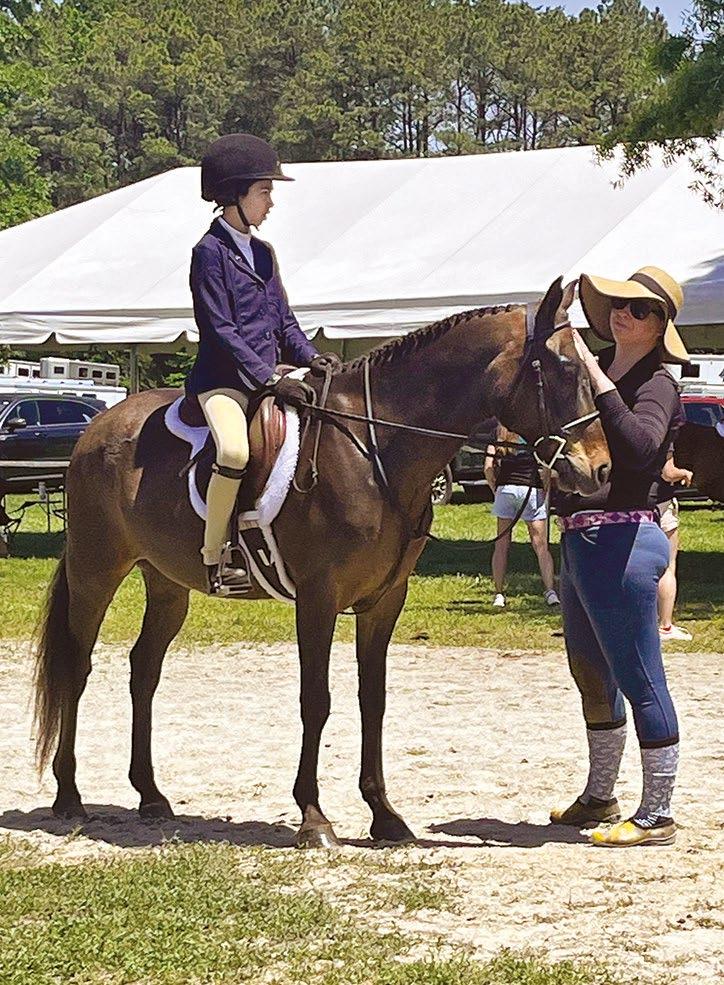
Spring 2024 | Riding Instructor 7
Markel® has you covered Purchase liability insurance online today! An accident that happens during your lesson is a threat to your career, business and assets. We know you are busy! It only takes a few minutes to protect you and your business by applying online for a Markel equine liability insurance quote. Products and services are provided by one or more of the insurance companies under the Markel North America Insurance Group and policyholder services are provided by the underwriting manager Markel Service, Incorporated, national producer number 27585. Terms and conditions for rate and coverage may vary. Markel is a registered trademark of the Markel Corporation. ©2023 Markel Service, Incorporated. All rights reserved. Liability • Mortality • Farm owners • Care, custody & control • Excess liability horseinsurance@markel.com +1.800.446.7925 Markelhorseandfarm.com /MarkelHorse Official Insurance Supplier of The American Riding Instructors Association • ARIA members receive a 10% association member credit applied towards liability policy premium. • Coverage applies wherever you teach (on and off premises). • Liability limits available up to $1,000,000. • Excess liability limits available up to $5,000,000. Madeline & Freddy, Instructed by Liz Briggs
Most of us don’t have the time, energy, or access to know all the facts about every situation that might come up in the barn aisle. Responses like “I’m interested to see what other details come out about this over time”, “That’s not how we want to handle our horses”, and “It’s really sad to see that happen” are sufficient to acknowledge what stirs our communities without jumping to conclusions. Staying relevant doesn’t require you to be passionately opinionated about every issue that makes a wave, only to maintain summary awareness of the ebb and flow of events around you.
Replace resentment with curiosity.
Have you ever found yourself grumbling about change? Maybe something you love was cancelled, you disagree with a new regulation, or—my personal Achilles’ heel— you’ve had to get a new smartphone because your favorite model was discontinued. When change is inflicted on us through external factors, we generally meet it with resentment because it disrupts our sense of familiarity. When change is our idea, however, we are excited to find out how the new product or method works. In short, we are curious, which is the antidote to resentment. If you can notice your negative reaction and readdress the problem with a desire to see how the alternative works instead, you can shift your entire mindset and leave yourself more open to our changing world. Being open and curious makes it hard to get too far behind.
Be ready to explain why you aren’t changing.
Just because something new is popular doesn’t mean you have to adopt it, and oftentimes you shouldn’t. We set a positive example for our clients when we place more emphasis on our values than our accomplishments, stand against negative influences, and refuse to compromise the care and well-being of our horses. Relevance is not about conformity. The difference between coming across as relevant versus
resistant to change is being able to explain your decision.
For example, if a client wants to try a new gadget or method on her horse that you disapprove of, be prepared to educate her about how it works and why you don’t endorse it. If you are withdrawing from an event due to disagreement with emerging trends or practices, have clear reasons rooted in facts. Even if a change is potentially positive, have an answer in defense of your status quo. A response such as “We considered switching to X, and I really like some things about it. Since we are not having any issues with our current method, though, we decided not to change anything right now” demonstrates a thoughtful decision over a knee-jerk rejection. Good horsemanship is timeless, and many “old-fashioned” ways hold up just fine against newer trends.
Rethink your impact.
Irrelevance hits us less like a freight train and more like a thousand paper cuts. It is difficult to identify and may feel impossible to reverse. Tightening schedules, other life demands, or changing physical capacities may make you feel like you have progressively less to give and are therefore less important to your students. Fortunately, you don’t have to be the cutting edge in order to make a difference.
As you think back to the people who made the most impact on you over time, consider what stages of life were affecting them. I gained a wealth of knowledge from a trainer who was unable to ride due to permanent injuries. This surely caused her many challenges in life, but it didn’t interfere with her ability to leave a legacy of better riders. What if she had allowed irrelevance to steal her joy in teaching? I spent many cherished hours in barns that weren’t as fancy as others in my area, having no concern that the aging owners couldn’t maintain a pristine property. What if they had decided to throw in the towel
when they couldn’t keep up with the barn across town? I enjoyed bringing my friends to experience “barn culture” far more than I minded that my adult trainers weren’t always up to date on teenage topics. What if they had given up on reaching the next generation?
Having an impact is more than keeping up with the pace of life or being as good as the next barn or even as good as you once were. The concepts of true horsemanship do not change, and neither do the fundamental needs of people. Compassion, integrity, laughter, and sportsmanship never go out of style. You are relevant to your students even when your circumstances evolve, so keep loving and educating them as you already have been for years. You are giving them and their horses a gift that remains unaffected by time or the whims of change.

About the author:
Spring 2024 | Riding Instructor 8
Lydia Fairchok is certified in Recreational Riding Level 1, and lives and teaches with her three horses in Central Indiana. Lydia segued from a full time instruction career to the field of public safety in 2014 and continues to teach a small number of students while working as a police officer and 9-1-1 dispatcher.
Summertime is just around the corner! Valley View offers opportunities for riders to experience an “away” camp – perhaps you have students who are looking for this type of camp.
Valley View Ranch Equestrian Camp
INFORMATION ABOUT YOUR CAMP :
Horse-lovers paradise! Since 1954, the purpose of Valley View Ranch has been to help each rancher have the full opportunity of horsemanship through instruction, time in the saddle on trails, and the care and responsibility of having her own horse, a'top Lookout Mountain in Cloudland, Georgia.
We offer several riding programs and encourage each camper to participate in all of them: English and Hunt Seat; Western Stock Seat and Barrels (Gymkhana); Trails and Vaulting. CHA instructors teach beginner to advanced riders. Each girl can spend as much time as she likes with her favorite ranch horse during her stay, or she can bring her own. Ranchers will find the facility comfortable, safe, and spacious. Located on 600 acres of lush pastures, wooded trails, and panoramic views. Girls from 8-17 years of age are eligible and enrollment is limited to 50. The Jones family are third generation horse lovers, camp administrators, and equine educators making girls dreams come true!


Spring 2024 | Riding Instructor 9 Feature
CONTACT INFORMATION NANCY JONES (706) 862-2231 info@valleyviewranch.com www.valleyviewranch.com
IT’S CAMP TIME AT VALLEY VIEW CAMP!

7 Tips to Increasing Your Resilience
Laura King CHt, NLP, Life & Performance Coach
Resilience is our ability to navigate ambiguity, uncertainty, change, and adversity while remaining clear-headed and emotionally balanced. I can’t think of anything that has more unpredictability and challenge built into it than working with humans and horses. And that’s particularly true if you’re working with humans and horses at the same time.
Fortunately, resilience is like a muscle that can be built-up and strengthened. Here are
my top seven tips to help you build resilience as a trainer of horses and/or people.
1. Develop Strong Coping Skills: We all need ways to meet those moments when things have gone sideways or are suddenly more unpredictable. I recommend developing a personal toolkit of skills you’ve cultivated that will reliably work for you when you’re beginning to become upset. Your toolkit might include techniques such
as mindfulness, deep breathing exercises, subtle movements, or positive self-talk to manage stress and maintain focus during difficult moments.
The key to coping skills is to practice them daily, training your brain to use them, so that when you need them, they’ll be available to you. Your brain isn’t going to think about breathing deeply when you’re panicking if you haven’t already practiced breathing
Spring 2024 | Riding Instructor 10
Sport psychology
deeply when you aren’t panicking. If you’re having difficulty establishing coping skills, hypnosis can help you by bypassing your bad habits and other unhelpful behavior and jumpstarting your coping skills.
2. Maintain a Growth Mindset: Recognize that setbacks and failures are opportunities for growth and improvement. Approach each challenge as a chance to learn and develop new skills as a trainer or instructor.
Consider reframing mistakes, for example. You might think you always want to make fewer mistakes, but what you really want is to not make the same mistake repeatedly. Each time you make a different mistake, you’ve opened a window to learn something. Having a growth mindset is about acknowledging that your abilities aren’t fixed at one level. With the proper training and practice, they can expand and grow. Failure is a state of mind.
That said, some people have a difficult time changing their mindset, despite all the journaling and reframing and pep-talks. Hypnosis can help here, as well, as it’s able to reach deep into your mental programming.
3. Build a Support Network: Surround yourself with a supportive community of fellow trainers, instructors, mentors, and friends who understand the demands of your profession. Having a network of individuals who can offer guidance, encouragement, and perspective can greatly enhance resilience in the face of adversity.
At the same time, you want a diversity of perspectives in your support network. Are all your trainer-friends Gen-Xers with grown children? Are they all women? Are they all at the top of their game? Having a multigenerational support network composed of both men and women, and people who mentor you as well as those you mentor, provides you with a multitude of perspectives. And it gives you the opportunity to get and give support.
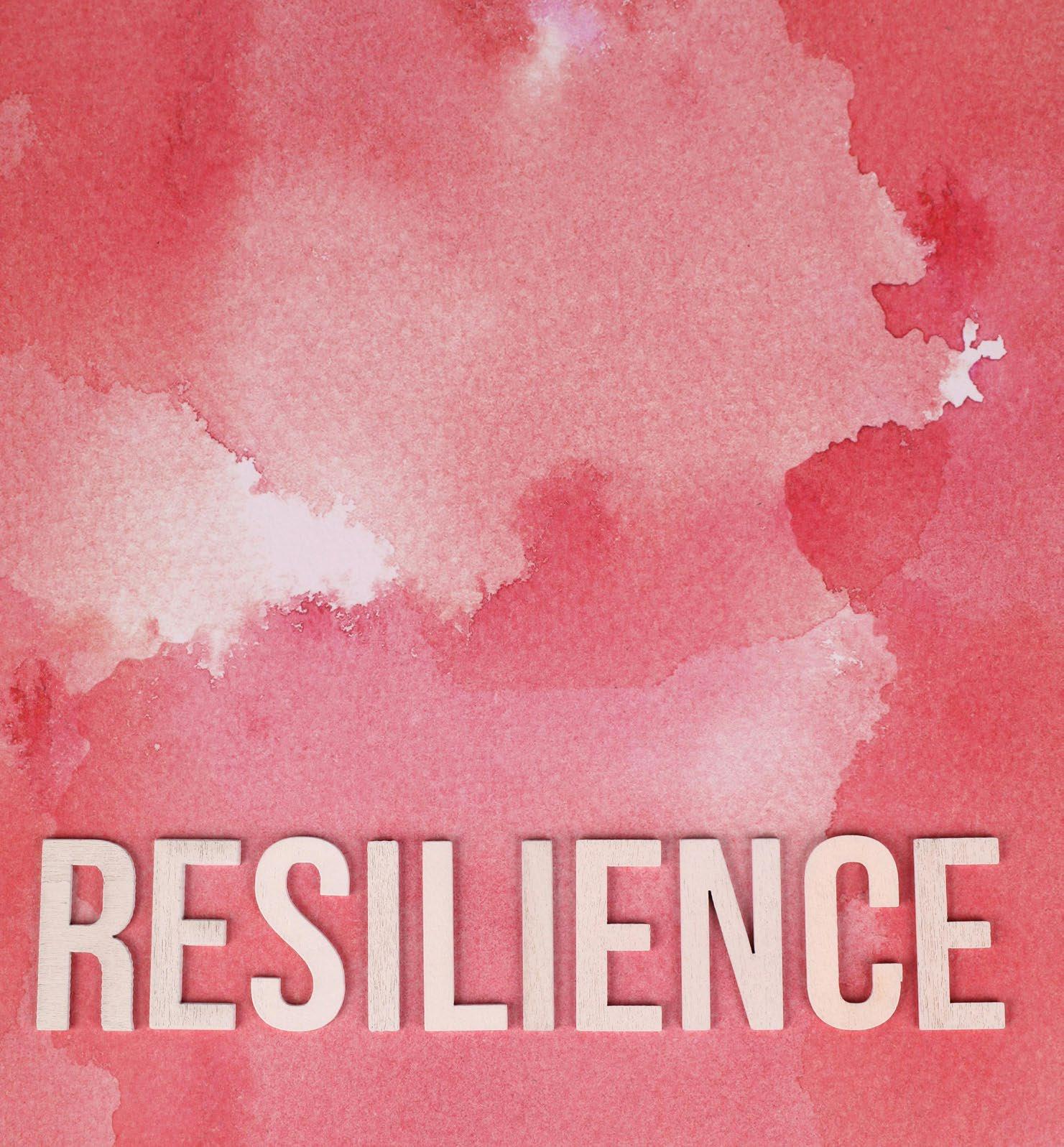
4. Practice Self-Care: What many people don’t realize is that healthy boundaries are a prerequisite to successful self-care regimens. You don’t want to be in a position where your self-care is necessary just to deal with the reality that people aren’t treating you well or are overstepping. Ask yourself where most of your stressors come from. If they come from people mistreating you, your first self-care step is to rectify that with a calm, rational discussion.
In the absence of boundaries, your self-care is helping you deal with and heal from your hurt. Once your boundaries are better, your self-care routine involves maintaining and then increasing your well-being.
A daily self-care routine includes getting sufficient restful sleep, good nutrition, positive self-talk, and exercise to sustain your energy levels and strengthen your body. Taking breaks when needed and engaging in activities you enjoy outside of work can also help prevent burnout and replenish
your reserves. Training your brain through mindfulness and/or hypnosis is also part of any well-rounded self-care routine, as both provide you will on-the-spot actions to take that will enhance your well-being.
5. Stay Flexible and Adaptable: We all know that working with horses and humans is inherently unpredictable, and things won’t always go according to plan. Meanwhile, how many times have you been surprised by what a horse or a person has done? Remember that none of us is entirely consistent, and you never know what’s going on in someone’s head or body that is affecting their thoughts or movements. Rather than being surprised, ask yourself what the most skillful thing to do is at that moment. Cultivate the ability to adapt quickly to changing circumstances and to find creative solutions to unexpected challenges.
In the equestrian world, we all know we need to stretch as well as be physically agile. When you’re properly stretched and agile,
Spring 2024 | Riding Instructor 11
your body is in the best position to quickly adapt to whatever situation you’re in. The same is true for your mind. Don’t be rigid. When we think we know exactly how things are going to go — even what we’re going to do — we’re not leaving room for flexibility and creativity. Be open, yet calm.
6. Set Realistic Goals: Establish clear, achievable goals for yourself and your students, and break them down into manageable steps. I like to craft SMART goals (specific, measurable, achievable, relevant, time-bound) and then work my way backwards, creating a plan for the smaller goals I need to achieve along the way.
If my student’s SMART goal is set to be achieved a year from now, I develop a plan for what she needs to have accomplished in nine months in order to reach that goal. And then I add what would she have to accomplish in six months, three months, and maybe all the way down to: What could she do today to set herself up to achieve her goal a year from now? Maybe today she needs to have a mindset that will set her up for success for tomorrow, and the day after. I use this system for myself, as well. And I particularly like having daily goals, as I can have a little win each day and celebrate it!
Goals should be realistic for the person, the ability level, and the time period. And by realistic, I mean we should always be pushing outside of our comfort zones and trying to find our potential.
Because nobody’s perfect (but I hope you realize you’re Perfect Enough), you will have temporary setbacks. We all do. Remember that it’s not the setback that defines you, but how you handle it. Are you angry with yourself? Are you so angry that you sabotage yourself? Are you filled with shame and self-loathing? Do you throw yourself a pity party?
If you’re able to learn from your setbacks and pick yourself up and move forward,
“
Resilience helps you evolve into a better trainer and a better person.
Practice is crucial, but it might not be sufficient. If your mental and physical habits seem to be impervious to change, hypnosis will likely help because it’s a shortcut to habit change. You want a brain that does the most skillful thing without thinking, and with hypnosis, you can retrain your brain to behave in a way that serves you.
By incorporating these tips into your approach as a horse trainer or instructor, and considering hypnosis if you want to optimize your brain, you can enhance your resilience and better navigate the ups and downs of working with horses and your students.
that’s resilience. Resilience helps you evolve into a better trainer and a better person. So, focus on your incremental progress, don’t allow your emotions to rule you, and look for the lesson in every setback. When you view it this way, nothing is really a setback.
7. Cultivate Patience and Persistence:
Understand that progress in horse training often takes time and requires patience and perseverance. Be willing to invest the time and effort needed to develop trust and rapport with your horses and students. There’s no shortcut to trust; it’s earned, and it happens with time, patience, and consistency. Remember that setbacks and challenges are a normal part of the process, and success often isn’t linear; sometimes it’s two steps forward and one back (or even vice versa!).
Finally, notice that all seven of the above tips involve practice. When we practice, we’re creating habits, which are actually neural pathways. What we do repeatedly is reflected in our brain. And our brain is what tells us what we’re able to do. If we’re not accustomed to thinking we can achieve our goals and to seeing how it can be done, we won’t suddenly be optimistic and confident when we need it most. And if we’re not certain that we have the capacity to grow from adversity, our actions won’t demonstrate resilience.
Need help addressing your challenges or achieving your goals? Sessions available in-person, via Skype, or by phone.
Products: www.summitpress.net
Sessions: www.summithypnosis.com
Email: SummitHypnosis@gmail.com
Phone: 561-841-7603

About the author:
Laura King is the Director and Founder of Summit Hypnosis and Wellness and is a Certified Hypnotist, NLP Practitioner, Life Coach, and Sports Performance Coach. Laura has written and published several books and workbooks, including ”Power To Win” for equestrians and “Perfect Enough,” a guide to help you evaluate your perceptions and experiences around vital areas of your life.
Spring 2024 | Riding Instructor 12
”

Business Insurance for Business Activities
Julie I. Fershtman, Attorney at Law
www.equinelaw.net
Some riding instructors, boarding stable owners, and horse trainers have full-time “day jobs” but carry out their equine businesses on the side. When these equine professionals assume that they need no business liability insurance, they could be making a very costly mistake. A major claim could occur, and their insurance company might deny coverage. Over the years, some people in the horse industry have learned this the
hard way when they defended themselves against personal injury lawsuits – and battled in court with their insurance companies when coverage was denied for the lawsuits. A few real-life examples follow:
Spring 2024 | Riding Instructor 13
Legal focus
In a Connecticut case, a couple’s horse boarding business was sued after one of their boarded horses kicked a visitor. At the time, they had no business insurance in effect, just a homeowner’s liability insurance policy, but the homeowners insurer denied coverage based on its policy’s “business pursuit” exclusion. In an extensive legal battle, that went up to that state’s Supreme Court, the court found that the policy excluded coverage because facts showed that the stable owners operated the horse business continuously, and they declared that business on their tax returns, reflecting a profit motive.
In a New York case, the homeowner operated a day care but also had an equine boarding business. One day, a child was permitted to be present when a boarded horse was led from a pasture, but the horse kicked the child in the head. Denying coverage, the insurance company cited its policy’s exclusion for injuries “arising out of business pursuits of an insured.”
In a South Carolina case, a husband and wife owned, bred, sold, and showed champion dogs, but one day one of their dogs bit its handler, resulting in a lawsuit. Although they operated their business under a busi-
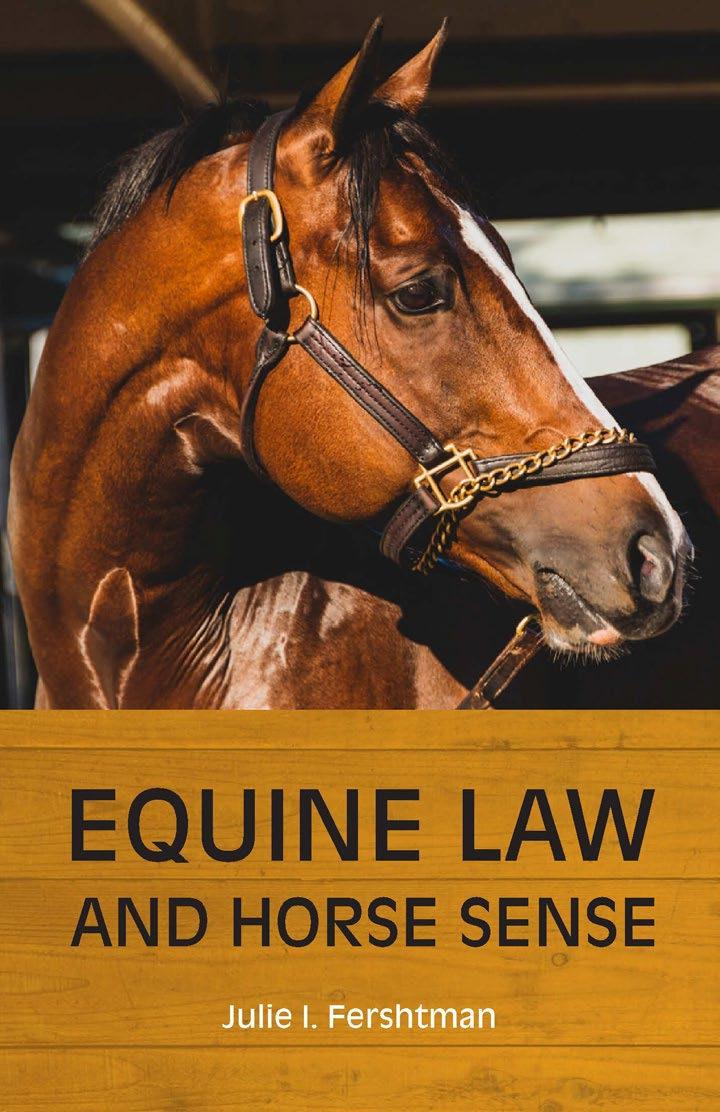
ness name and engaged extensively in business activities, which included competing in dozens of shows each year, they had no business insurance. Their homeowners insurer denied coverage for the lawsuit citing the policy’s “business pursuit” exclusion, and a court agreed, holding that the injury generating the suit occurred in connection with a business activity, and the business had a profit motive. Though the homeowners argued that their business wasn’t profitable, in an effort to challenge the “business pursuit,” the court was not persuaded. It found that they nevertheless had a profit motive, regardless of lack of profit.
What do these cases have in common? All involved small equine or animal business operators with no business insurance who were sued for personal injuries. All of the business operators endured expensive legal battles with their insurance companies over the issue of whether their policies’ “business pursuits” exclusions prevented coverage for those injury lawsuits. In these examples, the insurers won, thereby denying people coverage for the lawsuits.
The “Business Pursuits” Exclusion
Homeowners liability insurance policies include a list of exclusions where the insurer will not provide coverage. Policies differ as to how these exclusions are worded. As an example, one “business pursuit” exclusion prevented coverage “[a]rising out of or in connection with a business engaged in by an insured.” In other policies, exclusions require business activities to be of a “continuous” nature. Whether a “business pursuit” exclusion prevents coverage for a particular activity is typically determined on a case-bycase basis depending on the policy language, how an incident occurred, and the nature of a business activity taking place.
Preventing Disputes
To avoid coverage disputes with your liability insurance company, keep the following in mind:
1. If your equine business is not insured with an appropriate policy of business-related insurance, and if a claim is brought against you, your homeowners insurance company could deny coverage. However, you can protect yourself by purchasing insurance to cover your equine-related business such as commercial general liability insurance and equine professional liability insurance. Some homeowners insurance companies offer specialized incidental business endorsements for people who operate side businesses.
2. Even if your small equine business is not profitable, a homeowners insurer still might deny coverage for a claim against you based on a policy’s “business pursuit” exclusion.
3. Read your liability insurance policy carefully. Make sure you understand what it does, and does not, cover.
4. If you disagree with your insurance company’s position on a claim, discuss your rights with a knowledgeable lawyer.

Spring 2024 | Riding Instructor 14
Legal focus
Conclusion
Remember that liability insurance policies differ, and insurance companies can also differ as to how they construe their policies and evaluate claims. Added to this, courts can differ on how they interpret policies and exclusions. Make sure your policies cover your equine business activities. Discuss your coverage with an insurance agent and possibly with your lawyer.
This article does not constitute legal advice. When questions arise based on specific situations, direct them to a knowledgeable attorney.

About the Author
One of the nation’s best-known Equine Law practitioners, Julie Fershtman is a Shareholder with the law firm Foster Swift Collins & Smith, PC, in Michigan. A lawyer with 37 years of experience, she has handled cases in 20 jurisdictions nationwide and has tried equine cases before juries in 4 states. She is listed in The Best Lawyers in America and Super Lawyers. Her speaking engagements span 29 states. Her newest book is “Equine Law & Horse Sense,” published in 2019 by the ABA. Written for non-lawyers and lawyers, this book received 4 national book awards. Find it on Amazon and look for the horse on the cover. For more information, visit www.equinelaw.net


Spring 2024 | Riding Instructor 15
Julie I. Fershtman, Attorney at Law
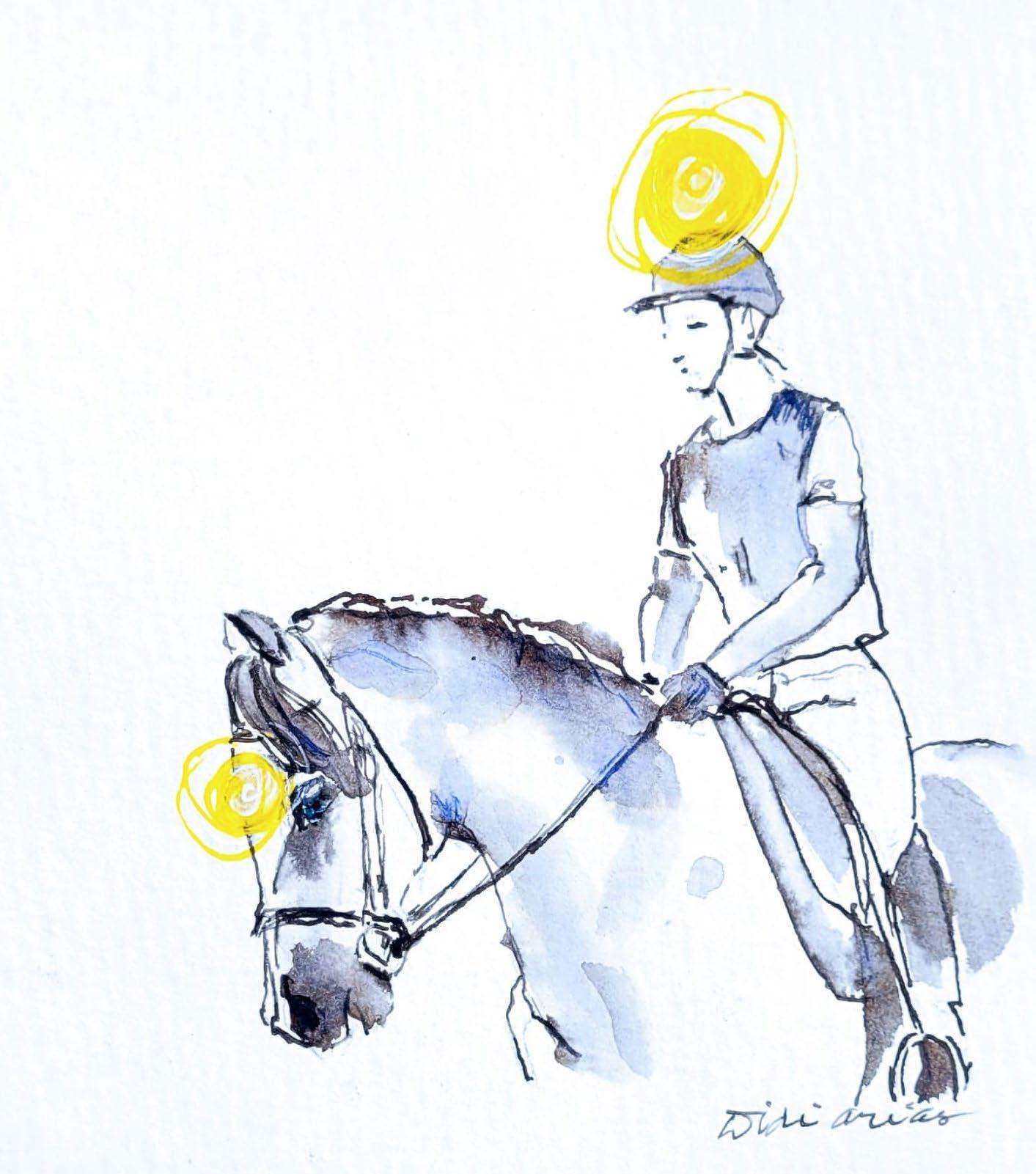
“Aha!”
Moments: When the Light Goes On
By Didi Arias Illustration by author
Recently I met a lady who told me that after years of riding, she finally understood a concept that she hadn´t clearly grasped before. “It was like l finally went ´oh yeah, duh!´. How could I have been so thick to not ´get´ it until now?”
“You just experienced a “lightbulb moment”, and that´s an exciting and good thing;”, was my reply, “so know that there will be many more to come.”
¨You think?”, she asked.
“I know”, I answered. “So stop beating yourself up over it and realize you just had a win.”
When the penny drops and we realize that the answer to something that has been perplexing us was right in front of us all along, two emotions can come in two play: annoyance at not getting it sooner, or contentment for figuring it out. I suggest shifting the emotion to the latter as that will allow a mental door to open to even more insightful moments. As our brains at work are trying to process a mass of information, ideas and sensations during a class, it is unrealistic to believe that there will always be an immediate, correct and consistent application for every concept being learned. Self-flagellation won´t bring you the illuminated moments that proceeding with a positive attitude will.
There are many reasons why we may not “get” something straight away. Perhaps the way it was worded did not immediately click with you; sometimes you just may need to hear it in a different way. An instructor that is creatively descriptive as opposed to one that is word-stingy may help inspire your understanding. We all have our own collection of those phrases that we´ve heard that simply “stick” with us and helped us along.
The context of a given situation is a consideration as to an outcome: at one point it may not have made sense to use a specific aid, but in another scenario, it did. Approaching an issue from a different perspective, or maybe on
a different animal, can make all the difference needed to gain clarity.
Reception from collective senses can certainly be revolutionizing when you´ve got them all working together. You may have heard an explanation, or seen a demonstration, but still couldn´t quite grasp it. But perhaps you just needed to feel it to pull it all together, and “Eureka!”, that lightbulb just switched on.
Of course, there are the times when you are physically present but the mind is elsewhere: I guess an appropriate term would be “a lightsoff moment”. You´d had a stinky day, other things are pressing on your thoughts, you´re tired and not at your peak. I experienced this recently when I was taking a non-horse related sport class: the teacher was instructing, and though I was hearing her, I just couldn´t process the information and master the set of responses in the timely way that she was looking for. It was like someone was messing with my ear-to-brain-to-body circuitry, and unfortunately for her, my dog was my partner in this session. Bordering on being flustered, I rallied in time and got it right, though I´m certain I caught a glimpse of my tolerant canine giving me the “duh, mom” eye roll.
I´m very much a believer in needing one´s own time with things, not that it is an excuse. An “Oh, it´s just not my time to learn this” reasoning would be maddening to hear from a student, but there is something to be said for the time being right, with things then starting to make sense and fall in to place.
An ideal place to discover lightbulb moments are in failures, but as society puts a lot of emphasis on succeeding, most don´t want to admit when they don´t. One of the things we can help students with is to experience and embrace failures, and to understand how they help them get closer to their goals. There needs to a realization that if things only ever went right, determination, curiosity, and innovation would be lost. Reflecting, not dwelling, upon failures can help create a desire for mastery and the ways forward.
As life is just a big classroom, we instructors get the privilege to encounter our share of lightbulb moments, too; such excellent opportunities to learn and improve one´s ability to teach. Perhaps the illumination comes with the improvement of communication skills, or in curiously pondering how to best tackle a particular issue. “I have an idea…” will always get my appreciative attention if I hear it from an instructor or coach: it lets me know that my success matters.
If you want more lightbulb moments to enter your life or those of your students, set out to unclutter the thought flow paths to clear the way. Discourage self-doubt by encouraging to trust the wisdom already achieved, to feel accomplished at the obstacles already tackled, and to see the potential that lies ahead.
This article got me recalling those situations that lit up that yellow glow in my own head, and I asked my students to share theirs with me, too. You might find it interesting to ask your students about their big lightbulb moments and if you had any influence on them; may I say that it would be “enlightening” to find out.

About the author:
Didi Arias is a Level 3 ARIA Certified Instructor and national dressage judge and teacher, who resides in Almeria, Spain.
Spring 2024 | Riding Instructor 17
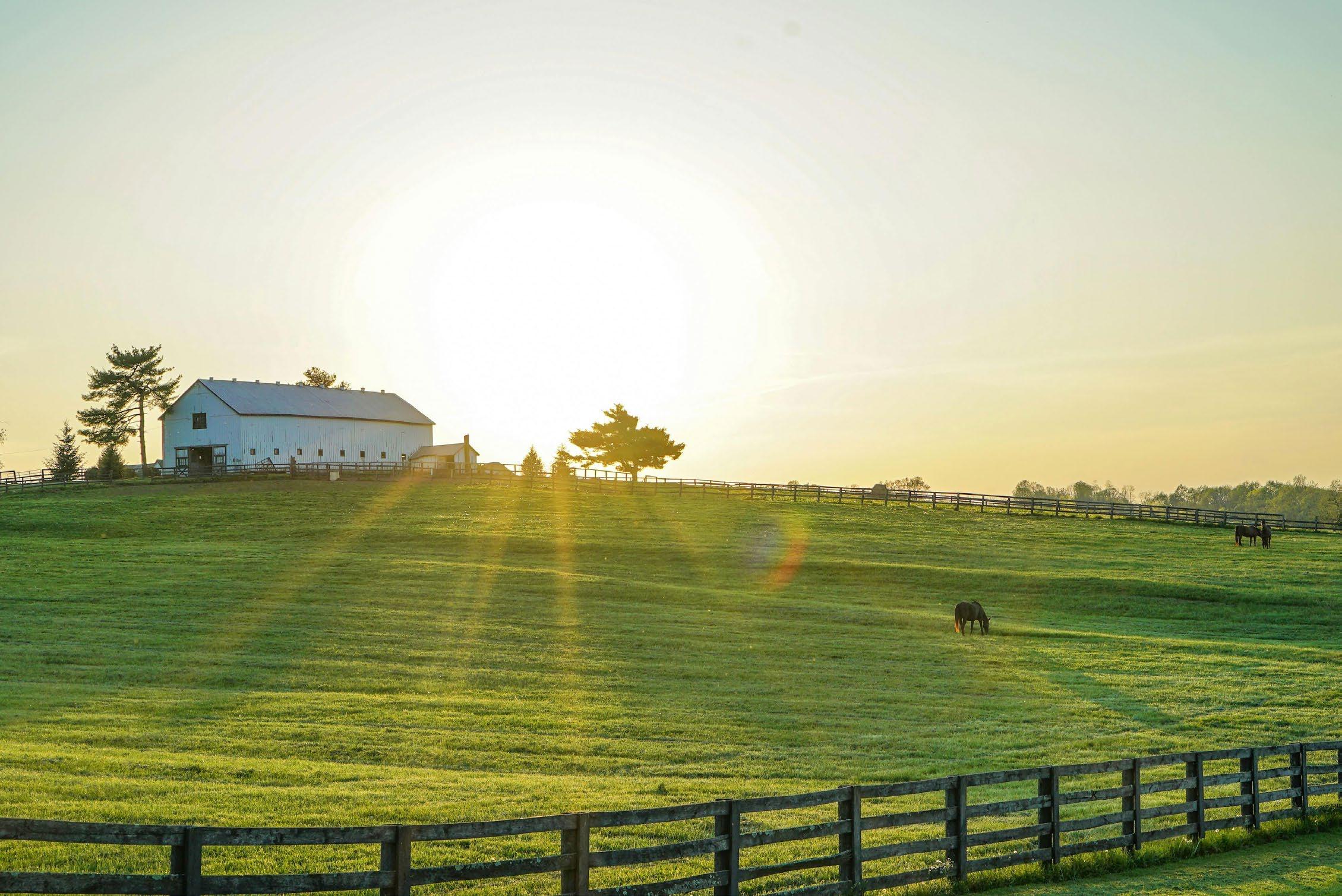
Equestrian Tech:
Harnessing Technology In & out of the Stable
Written By Shya Beth
It’s no secret that technology has infiltrated nearly every facet of our day-to-day life, including the horse world. From horse biometrics and performance apps to horse health care, it seems that every day there is a new level of excellence and knowledge being reached through the help of tech. The question is, how can it help you?
Riding instructors can leverage current technologies to enhance their instructing and provide a more enriching experience for their students - without the need to com-
puter code, create their own app or platform. Incorporating technology into your training and lesson plans not only modernizes the learning process but also opens up new avenues for improvement and engagement between both students and instructors.
Use Video Analysis To Monitor Progression
More and more riding instructors are using video analysis within their training system, which offers instructors and riders valuable insights into their performance. Recording
lessons gives instructors visual feedback on how their students are progressing over time, and allows for students to see their progress, too. Both you and your student could watch the recording of the previous lesson, seeing their posture, balance, and techniques in real-time, aiding in a deeper understanding of their strengths and areas that need improvement. As an instructor, you can analyze the student’s position, and balance through slow-motion playback, pinpointing issues that may affect their performance.
Spring 2024 | Riding Instructor 18
Business matters
Enhancing communication between instructors and student is another benefit of including video analysis in your lesson plan. Visual feedback can bridge gaps in communication, as riders may better comprehend and implement corrections when they see themselves in action, besides direct variable communication while in the saddle.
Personal Safety of Students
Picture this: Your student takes his or her horse out for a ride, alerting you that they are going out and where they are going. Several hours later, they still haven’t returned. In this case, it’s easy to jump to worst case scenarios. One way to bring safety to the forefront of your barn and business without compromising on freedom of movement and allowing students to have fun is recommending the use of a safety app that can alert contacts in the case of an emergency. The Horserider SOS app scans your movements, and in case of no motion, it sends an emergency signal with the student’s location information to a prearranged contact to come to their aid. Created initially for bikers, the ICEdot is another device that can also be mounted to rider helmets. Paired with the smartphone app, it can detect forceful impacts, such a student falling from their horse. When a fall or other impact is detected, a countdown is started. If the wearer fails to respond to stop this countdown, the app will send out an emergency alert to the listed contacts, providing the name, health information, and geolocation of the wearer.
Barn Spies
It’s more common nowadays to have cameras within and outside of stables, and for good reason. From horse and equipment theft, conflicts between students, accidents and everything else in between, there’s no reason not to have security cameras in place. Today’s cameras no need to be run on cables or viewed from a monitor - it’s easy to set up cameras inside and outside, and the camera feed can be accessed from your cell phone or tablet. No matter
where you are, your barn is always secure. Cameras can be moved as you see fit, and concealed or hidden.
How many cameras would you need? Most likely, more than one. For a stable on the smaller side at about 2,000 square feet, four cameras should be fine. If you want full or near complete coverage on different stalls, entrances, exits, feed and tack rooms, offices and indoor/outdoor areas, eight or more cameras would be needed, but it all depends on what areas you think are the highest risk, and thus would need to be surveyed. Camera systems can send photos, alerts, sense motion and even enable two-way speech.
We are Always Watching…
…but not in a creepy way. We’ve all been there: Checking the temperature to see if our horses need to be bundled up outside, inside, overnight, and wondering if they are too warm or too cold. Thermal cameras like the Horsepal, a wearable device that is attached underneath the blanket while the horse is outside to monitor the temperature and activity, and also sends out your location’s weather forecast. It can also send out a warning if your horse a blanket due to current weather conditions.
Along those same lines, have you ever wanted to attach a GPS tracker to your horses so you always know where they are? Even’t if you haven’t thought of that, it’s not a bad idea. Especially in the case of horses being turned out in large fields, there are a few horse-centric options - so no need to get an air tag and clip it to your horse’s halter! A GPS tracker like the MiniFinder is one of several options, both small and compact, durable and practical.
So, what is the purpose of needing to GPS your horse’s whereabouts? Safety and security, mainly. These types of trackers track the horse’s location, issuing alerts if the horse gets out of its pasture or home field. Through the app, you can establish a virtual
horse fence, receiving notifications should the horse venture beyond the confirmed boundaries.
At the end of the day, we all want our students and horses to be conformable and safe while spending time in and out of the saddle. Technology’s integration into the horse world has been a long time coming, and heighten the ability to be secure, and enhance teaching students. Video analysis tools empower instructors to track and enhance riders’ progress, fostering improved communication. Innovative safety apps and devices ensure riders’ well-being by providing emergency alerts and location information. Stables benefit from modern security measures, with easily accessible, remotely monitored cameras offering comprehensive coverage. Which will you choose to implement into your business and teaching methods?
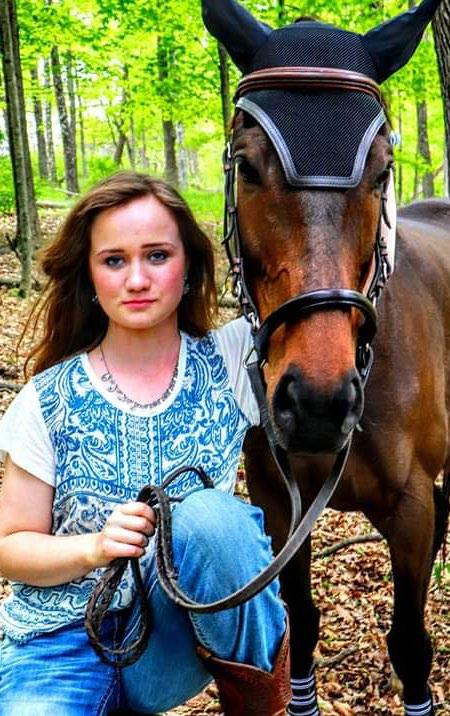
About the author:
Shya Beth is a rider, artist writer and all around horse lover based in New Jersey, USA. Whether creating horses in art, riding in the fields on her farm or writing about horses, horses are a huge aspect of her life and inspire her every day.
Spring 2024 | Riding Instructor 19
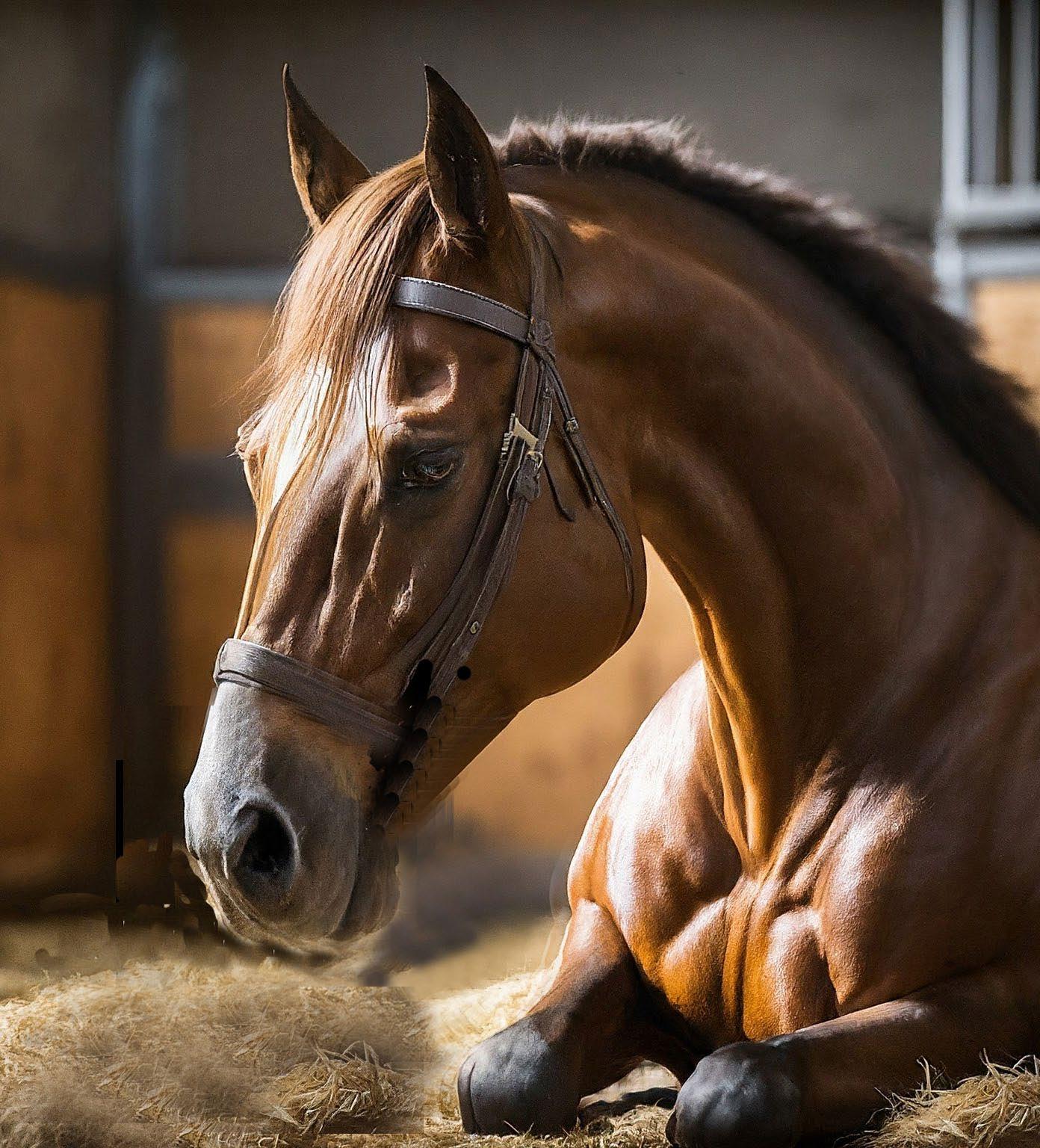
Stress Pneumonia In Horses
By Janet Forster
Spring 2024 | Riding Instructor 20
Stress pneumonia in horses, also known as pleuropneumonia or shipping fever, is a serious respiratory condition that can occur when horses are subjected to significant stress, particularly during transportation. It is primarily caused by bacterial infection, with Pasteurella spp. and Streptococcus equi subspecies zooepidemicus being common culprits.
Causes Of Stress Pneumonia
As mentioned, Stress Pneumonia is commonly associated with travel hence the name ‘shipping’ fever. In these circumstances, contributing factors include:
Stress
Horses may experience stress during transportation, especially if they are confined for long periods or if the journey involves significant changes in temperature, humidity, or altitude.
Weakened immune system
Stress can compromise the immune system, making the horse more susceptible to infections.
Poor ventilation:
Inadequate ventilation during transportation can increase the concentration of airborne pathogens, making it easier for the horse to inhale infectious agents.
Close contact with other horses
Transportation often involves transporting multiple horses together, which can facilitate the spread of respiratory pathogens.
Stress pneumonia can also be caused by various other situations that induce stress and compromise the horse’s respiratory health. In fact, any situation that causes stress or compromises the respiratory health and immune function of horses can increase the risk of stress pneumonia or other respiratory infections. Some of these situations include:
Confinement
Prolonged periods of confinement, such as
during stall rest or in overcrowded conditions, can increase stress levels in horses and contribute to the development of respiratory infections.
Intense exercise
Strenuous exercise, especially when horses are not properly conditioned or acclimated to the activity, can lead to respiratory stress and compromise the immune system, making horses more susceptible to infections.
Environmental changes
Sudden changes in environmental conditions, such as extreme temperature fluctuations, high humidity, or exposure to airborne irritants like dust or mould spores, can stress the respiratory system and increase the risk of pneumonia.
Social stress
Social interactions within a herd hierarchy or during introduction to new herd members can cause stress and affect the immune system, making horses more susceptible to respiratory infections.
Nutritional stress
Poor diet, inadequate water intake, or sudden changes in feed can lead to nutritional stress and compromise the overall health and immunity of the horse, making them more susceptible to respiratory illnesses.
Medical procedures
Certain medical procedures, such as dental work, surgery, or prolonged anesthesia, can induce stress and weaken the immune system, predisposing horses to respiratory infections.
Environmental pollution
Exposure to environmental pollutants such as industrial emissions, vehicle exhaust, or agricultural chemicals can irritate the respiratory tract and increase the risk of respiratory infections in horses kept in urban or industrial areas.
Overcrowding
Overcrowded living conditions, such as in boarding facilities or at events, can increase stress levels and facilitate the spread of respiratory pathogens among horses.
Overall, It’s important for horse owners and caretakers to minimise stressors, provide appropriate management practices, and monitor horse health closely to prevent the development of respiratory illnesses.
Preventing Stress Pneumonia In Horses
Prevention of stress pneumonia involves minimising stress during transportation and ensuring proper ventilation in trailers or transport vehicles. Good biosecurity practices, such as avoiding contact with sick horses and maintaining a clean environment, can also help reduce the risk of infection.
Minimise stress during transportation:
Plan journeys carefully: Choose routes that minimise travel time and avoid extreme weather conditions. Plan for frequent breaks to allow horses to rest and recover.
Avoid overcrowding: Ensure that horses have enough space to move comfortably within the trailer or transport vehicle. Overcrowding can lead to increased stress and competition for resources.
Provide adequate breaks for rest and hydration: Schedule regular stops during long journeys to allow horses to rest, stretch their legs, and drink water. Dehydration can exacerbate stress and increase the risk of respiratory problems.
Ensure proper ventilation:
Maintain good airflow: Ensure that trailers or transport vehicles are well ventilated to prevent the build up of moisture, dust, and airborne pathogens. Proper ventilation helps to reduce the concentration of respiratory irritants and pathogens, minimising the risk of infection.
Spring 2024 | Riding Instructor 21
Sponsor Spotlight

WIDE HORSE? NO WORRIES! WINTEC 2000 WIDE ALL PURPOSE
The Wintec 2000 Wide All Purpose saddle offers your students exceptional comfort with a refined design that allows an effortless leg position and perfect balance.
Wide horses will enjoy the super-soft panels which mold in and around their muscles, for a closer more stable fit.
This saddle is specifically designed to provide that close contact feeling for riders with wide horses. Help your students and their horses find their perfect saddle at www.wintec-saddles.com
EARTEC THE E-PAK SERIES
The all new EPAK Cyber by Eartec is a breakthrough alternative to traditional communication systems. Boasting full-duplex wireless communication without the need for a base station, this lightweight accessory features a slimline back band that can be worn comfortably under a riding helmet. Up to 9 users can communicate hands free at whisper levels offering a dynamic experience for both the coach and student riders.
1.800.399.5994
https://eartec.com/equestrian/
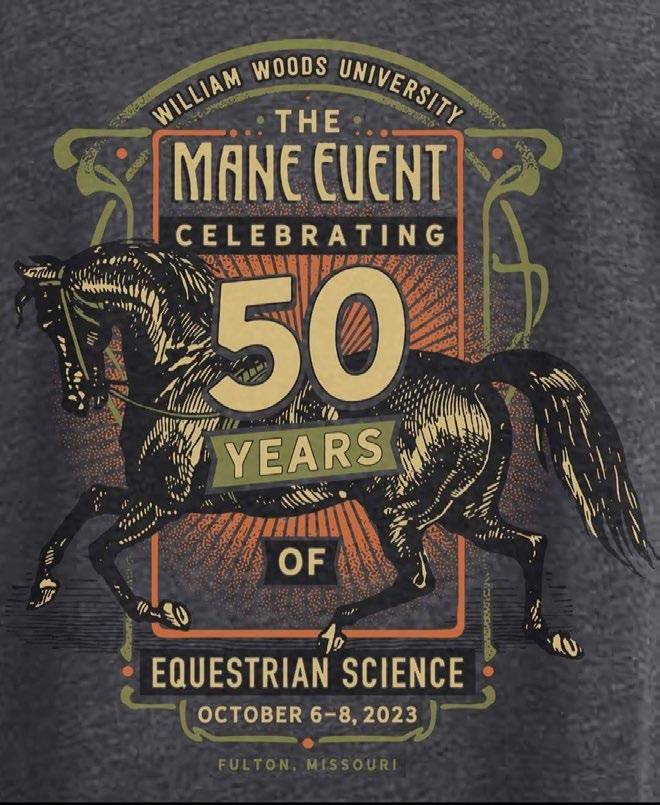

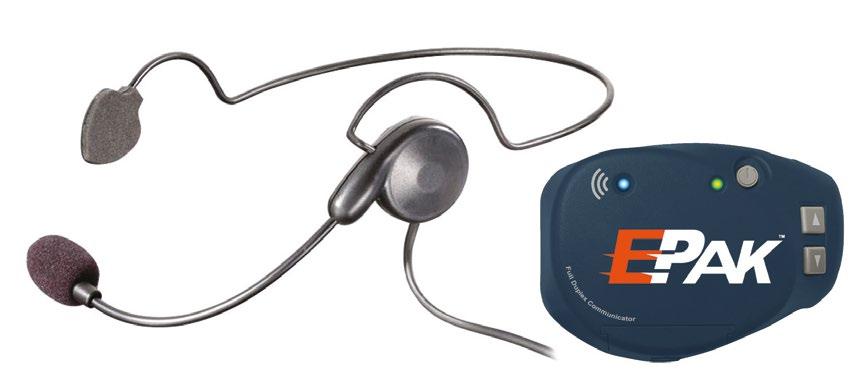
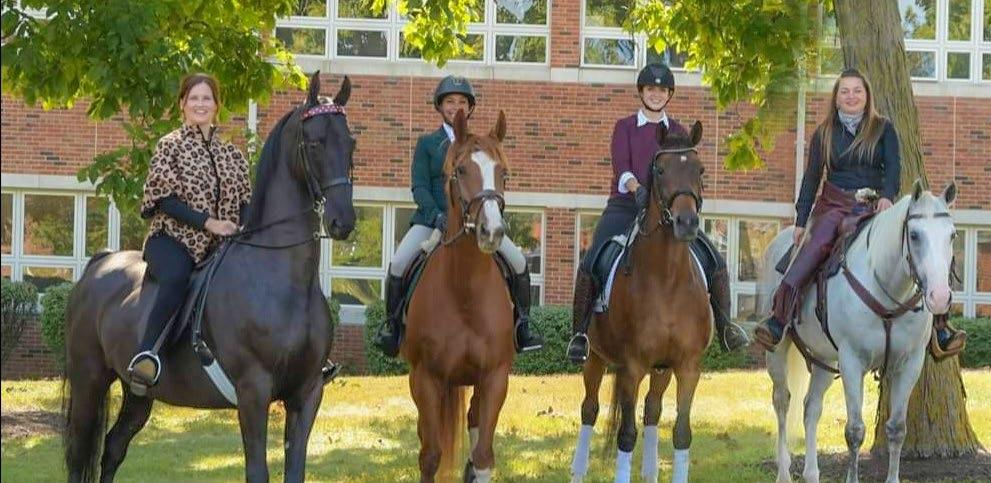
William Woods University celebrated an incredible milestone of 50 years of Equestrian Education in 2023! The first institution to grant a four-year baccalaureate degree in the equestrian field with a B.S. in Equestrian Science, the program has since expanded to also offer a B.S. in Equine Administration and a B.S. in Equine General Studies with a concentration in either Equine Media or Equine-Assisted Services. In October, the program was celebrated on campus with a weekend of activities culminating in the “Mane Event Gala”,
where alumni, current students, supporters, faculty, staff, and horses were all honored. Here’s to another 50 years!
Learn how you can turn your passion into a career at William Woods University. Click here to get started.
WilliamWoods.edu/Global
Spring 2024 | Riding Instructor 22
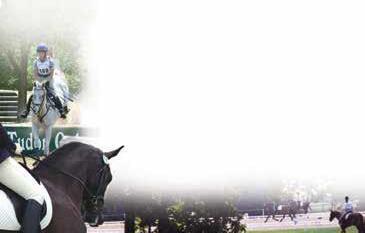
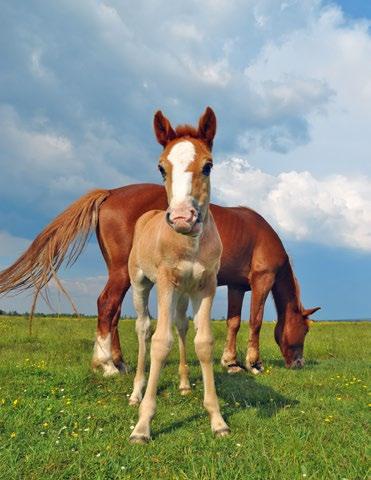
















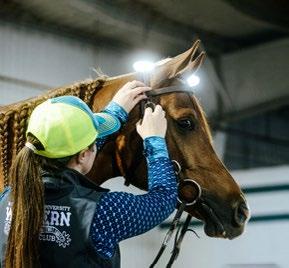


Spring 2024 | Riding Instructor 23 Earn your bachelor’s or online master’s from our nationally-acclaimed equestrian program williamwoods.edu/EQS Questions? 800.955.3159 | admissions@williamwoods.edu THE NAME TO KNOW IN EQUESTRIAN STUDIES SINCE 1924 Gain hands-on experience Show competitively » The first university in the U.S. to offer a four-year degree in equestrian science and the only one in the U.S. with all four riding seats! » Advance your teaching career with our online M.Ed. in Equestrian Education degree » Compete at national shows and world competitions » Gain hands-on experience at our on-campus equestrian center, including 3 riding arenas and over 100 horses Moving? Don’t miss a single issue… Phone or e-mail us with your new address. 603-605-5275 aria@riding-instructor.com www.riding-instructor.com Official Publication TheAmericanRiding Instructors Association Spring2023 Equine Affaire Inc. 2720 St. Route 56 SW | London, OH 43140 (740) 845-0085 equineaffaire.com The 2024 Equine Affaire offers horse people of all disciplines, all breed persuasions, and all skill levels unparalleled opportunities to learn, shop, network, and celebrate the horse! North America’s Premier Equine Exposition & Equestrian Gathering APRIL 11-14 COLUMBUS, OH Ohio Expo Center Your E-Mail Address is important - for us and for you! ARIA communicates primarily by e-mail with its members. Please make sure we have a working e-mail address for you. If you’re not sure, write to us at aria@riding-instructor.com and let us know your current e-mail address. Thanks!
Use fans or windows: Install fans or open windows to promote airflow within the trailer, especially during hot or humid weather conditions. This helps to maintain a comfortable and healthy environment for the horses during transportation.
Practice good biosecurity:
Avoid contact with sick horses: Minimise the risk of disease transmission by avoiding contact with horses exhibiting signs of illness. Quarantine sick horses and implement strict biosecurity protocols to prevent the spread of infection to healthy animals.
Maintain a clean environment: Regularly clean and disinfect trailers, stalls, and equipment to remove pathogens and reduce the risk of contamination. Pay special attention to high-traffic areas and frequently touched surfaces.
Implement hygiene measures: Practice good hygiene practices, such as washing hands thoroughly between handling different horses, using separate equipment for each horse, and wearing protective clothing when dealing with sick animals.
Monitor horse health:
Regular health checks: Monitor horses for signs of respiratory illness, especially after transportation or other stressful events. Look for symptoms such as coughing, nasal discharge, difficulty breathing, and lethargy.
Prompt veterinary care:
If any concerns arise about a horse’s health, seek veterinary attention promptly. Early detection and treatment of respiratory infections can prevent complications and improve the horse’s prognosis. Follow your veterinarian’s recommendations for treatment and management to ensure the best possible outcome for your horse’s health and wellbeing.
How Do I Know If My Horse Has Stress Pneumonia?
Symptoms of stress pneumonia in horses
may include:
Fever
Nasal discharge (often thick and purulent)
Coughing
Laboured breathing
Decreased appetite
Lethargy
Elevated respiratory rate
Increased heart rate
Diagnosis of stress pneumonia is typically based on clinical signs, physical examination findings, and diagnostic tests such as blood work, thoracic ultrasound, and radiography.
Treating Horses For Stress Pneumonia
Treatment usually involves aggressive antibiotic therapy, often administered intravenously or intramuscularly. Supportive care such as rest, proper nutrition, and good ventilation is also essential for recovery. In severe cases, hospitalisation and intensive care may be necessary.
Final Thoughts About Horse Stress Pneumonia
It’s crucial for horse owners and caretakers to be vigilant for signs of respiratory illness, especially after transportation or other stressful events, and to seek veterinary care promptly if any concerns arise. Early detection and treatment can significantly improve the horse’s prognosis.
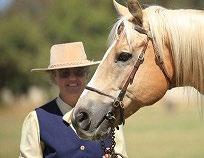
About the author:
Janet Forster hails from sunny Perth in Western Australia. During a lifetime spent with horses, she has bred, competed, loved and written about them. She owns a collection of high percentage Tb crossbreds, most of which are palominos and registered Australian Stock Horses.
Spring 2024 | Riding Instructor 24
6 8 1 2 2 4 6 9 2 1 7 9 2 9 3 8 5 6 2 7 5 1 5 7 3 4
… in which Cameo Miller stirs her thoughts and ideas to see what rises to the top.
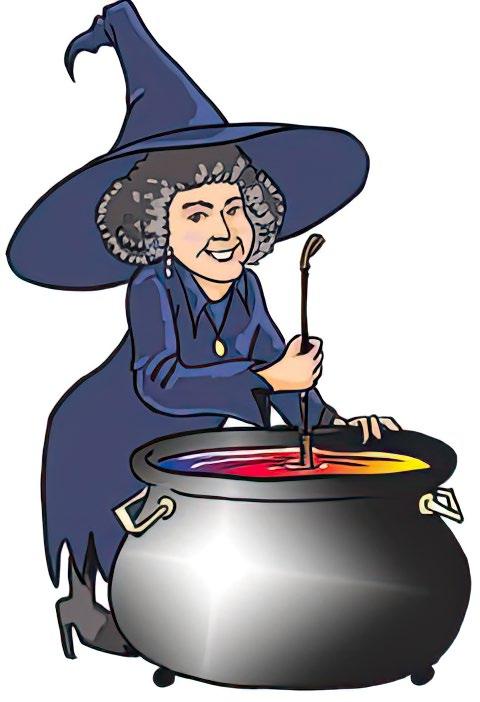
YOUR TWINKLING TRAIL
By Cameo Miller
Illustration by Bethany Caskey
The vast majority of us are in this profession because we love it. There is an old joke that goes: how do you make a million dollars in the horse profession? Start with 5 million. We can make a living doing what we love, but few of us get rich doing it. And as for the prominent recognition—some during Olympian years, but, even then, mostly only with a select few who are known to an equally select few. So, not for the wealth and fame. What we have in spades is that we leave a lasting impression on so many lives—both human and equine. There are always a few bad apples in the barrel, but I believe that, for most of us, those impressions we leave are very positive. The best of us are constantly striving to find better ways to help our students and horses. To find the best ways to improve both so they can be their best selves. And many of us are trying to help our students and clients to improve in their lives outside of the horse
world too. Most of the articles in this magazine have been geared to helping you do exactly that. And it has been that way since its inception oh so many years ago.
I recently found a wonderful item on my Facebook page that I want to share with all of you. It read: “If every single person who has liked you in your lifetime were to light up on a map, it would create the most glitteringly beautiful network you could imagine. Throw in the strangers you’ve been kind to, the people you’ve made laugh or inspired along the way, and that star-bright network of you would be an impressive sight to behold. You’re so much more than you think you are. You have done so much more than you realize.” This was by Donna Ashworth. She said it so well! And I think it is well worth emphasizing to all.
One of the things I have stressed in many articles, is that we interact with such a wide range and vast number of people because of our profession. We have a unique opportunity because of this. Not only do you interact with your students and clients, but there are all the others this profession brings us into regular contact with—vets, farriers, feed story owners, the farmers who raise hay, and, of course, the families of everyone at the barn. But that is just the obvious people. There are the ones we briefly interact with at clinics, shows, 4-H fairs, Pony Club meets, etc. And you do have a life outside of the barn. Did you compliment someone in passing in town? Did you smile at someone you’ve never even met (smiles are like yawns as both are contagious)? Did you hold a door for someone or help them in some other small way? It doesn’t have to be something big. Each and every one of these kindnesses leaves a bright spark in their day, in their life. Each and every kindness leaves a twinkle in an otherwise dark universe.
You may not even notice the effect your little act has on someone. But who knows if that little act of kindness is the spark they need to get through an otherwise difficult day. There was another saying on Facebook the same day that relates to this. “At times our own light dims and goes out and is rekindled by another. Each of us has cause for deep gratitude to those who have rekindled our flame.” (Albert Schweitzer) Pay attention if someone else’s act of kindness was what you needed during a difficult day. Even if you don’t get to thank them, you can be fully cognizant of their gift, can fully appreciate it, and be aware that your acts of kindness can be just as useful to someone else. Buddhists call this mindfulness practice—being fully aware of each little thing rather than letting them slip past
us unnoticed. Little things like a compliment or a smile can be so important—we should be aware of them as they are given and received. How many anecdotal stories have you heard about some small thing that changed the course of someone’s life?
And we can’t forget the animals whose lives we have also enriched. You can recognize it in the nicker of greeting, the wag of a tail and the happy grin, the purr with closed eyes and gently kneading paws. We all know the difference between the eagerness of mealtime, and the happiness of just being in our company. And we also know full well the effect and power those animals have to brighten and enhance our days.
We can get dragged down by all the negativity, discord, and severe problems in the world around us as well as any in our own lives. Sometimes it’s hard to see any light twinkling at all. That’s when we need to look for that light wherever we can find it. Whether that be in others, in our beliefs, in nature, from our animals, or wherever. That’s when we need to allow someone or something outside of ourselves to rekindle our own flame. That’s when we need to recognize that there are a gazillion lights twinkling around us. It’s like looking into a dark night sky. All those points of light, all those suns giving off light. We take in their light and give off our own. It is not our burden to be kind and add a twinkle of light, we do not need to do this alone. And we do not need to feel abandoned when life is hard. Allow the light of others to help you get through. And allow your own light to add to the brilliance. This is not something you are called on to do, but rather a recognition that you already contribute so much more positivity than you may be aware of.
The spark of caring and kindness goes both ways— giving and receiving going on all over the world all the time. All of us touch so many lives, in so many ways, each day. We are all constantly sparking twinkling lights in the trail behind us. Whether or not you know it, each one of you has positively contributed to the lives of more people than you are even aware of. Whether you can look behind you and see it or not, you are leaving a brilliant twinkling trail behind you in life. You really have done so much more than you may realize.
About the Author:
Cameo Miller is a Masters-level clinical psychologist and a Level IV ARIA Certified Instructor based in Michigan. She is a member of the ARIA Evaluation Panel and an ARIA National Test Center Administrator.
Spring 2024 | Riding Instructor 25
Cameo’s cauldron

My “Department Store Rules”
Written By Carol Gordon
Spring 2024 | Riding Instructor 26
Business matters
Show season is just a snowflake or two away. It may be a time to spiff up your wardrobe and a question that I hear a lot is “Are my show clothes deductible?”. As an instructor, trainer or other professional horse person, some of your clothes, including your show clothes, may be tax deductible. But the majority of your work clothes are probably not deductible. I use what I call the “Department Store Rules” as general guidelines to determine what is and is not deductible. My “Department Store Rules” are:
Can you buy something similar to your potentially deductible clothing item in a department store?
Would most people feel comfortable wearing this item of clothing into a department store? If the answer to either question is “Yes”, chances are that the cost of the clothing is NOT deductible. So on the “NOT deductible list would be items such as:
• Sports bras
• Muck boots
• Favorite polar fleece jacket even if that jacket is manufactured only by an equestrian clothier.
• Extra warm coat you wear when you are giving lessons, teaching a clinic, judging, etc.
So then, what is deductible?
Protective/Safety Clothing: hard hats, riding boots, chaps, riding gloves, protective vests and any other type of protective clothing not suitable for everyday wear.
Show Clothing: breeches, top hat, hunt jacket, etc. IF the showing is a business expense (e.g. you are showing your clients’ horses, sale horses, etc.) AND the item of clothing is not suitable for everyday wear (e.g. your lucky show socks, the T shirt you wear under your show coat…).
Something you can do to expand this rather narrow window of what is deductible very slightly is to have some of your regular business-use clothes embroidered with your logo or otherwise use them as a marketing device. For a trainer who frequently coaches at horse shows, you could have your baseball cap and jacket embroidered with your business logo and the cost of the clothing and the embroidery would normally be deductible. Don’t go over the top on this idea and have everything in your closet embroidered or the IRS could disallow all of the deductions. Weigh the cost of the tax savings you gain by getting the deduction and the possible marketing benefits against the cost of the embroidering to see if the idea works for you. Remember that for any expense to be deductible it must be a business-related
expense, ordinary (common and accepted in your type of business), necessary (helpful and appropriate to your business) and you must have documentation (receipts) that you actually incurred the expense. So on your next trip to the tack shop, remember my “Department Store” Rules and you’ll know how much of your purchase should be tax deductible.
About the author:

Carol Gordon is a CPA with an MBA from Boston College and the owner of Carol Gordon, CPA, which provides consulting services to equine-based businesses. You can contact her at cgordoncpa@gmail.com
If you have any questions that you’d like covered here, please email her with your suggestions.
Spring 2024 | Riding Instructor 27
4 6 8 1 7 3 5 2 9 1 5 2 4 9 6 8 7 3 9 3 7 2 8 5 1 4 6 7 4 3 8 5 1 9 6 2 6 2 1 7 4 9 3 5 8 5 8 9 3 6 2 4 1 7 8 7 6 9 1 4 2 3 5 2 1 5 6 3 8 7 9 4 3 9 4 5 2 7 6 8 1

 by Cameo Miller
by Cameo Miller





























































